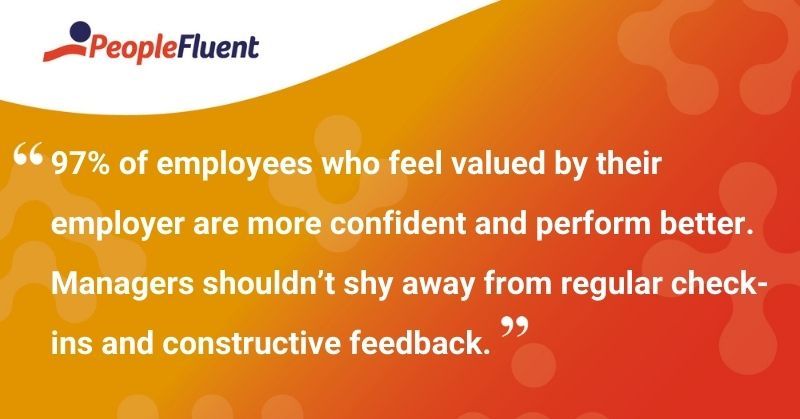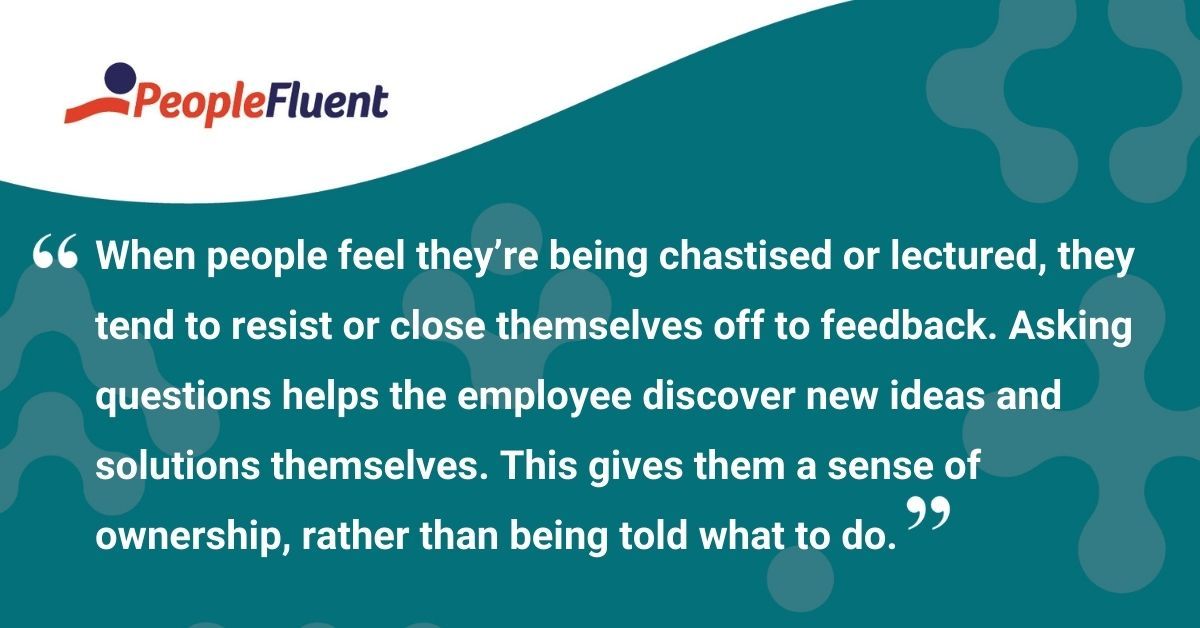Published: May 24, 2021Time to read: 5mins Category: Talent Management
The GROW Method: 4 Steps to Make Coaching Conversations Successful and Effective
It’s no secret that your staff can feel put off by a negative annual review, causing them to look for a new job. This is one of the reasons why your performance management process needs to adapt and make room for open lines of communication—giving managers better insight into how an employee is doing. Read on to find out how!
The core of any effective employee development program is regular, one-on-one coaching conversations with managers. There are a number of coaching styles and personalities out there, and managers need to develop an approach that’s authentic to them.
At the same time, employee coaching is a skill that can be improved. And, there are certain principles that can set the framework for a positive teaching moment. This will ultimately help managers set the stage for better performance across teams.
The Need for Coaching
After the last few years, there’s no doubt that employees’ confidence levels may have taken a hit. After all, we’ve been cooped up and working from home without our peers right next to us—typically one of the ways workers can increase their confidence. Another way to achieve this is through manager coaching.
The first thing that managers need to remember is that employees want to be coached. To them, this extra effort signals that the organization wants to see them learn and grow. It makes sense that 97% of employees who feel valued by their employer are more confident and perform better.
Managers shouldn’t shy away from regular check-ins and constructive feedback. They should embrace these conversations as opportunities to help individuals and teams improve. When employees receive positive feedback, they’re more motivated to persevere even if they feel they’re struggling.

YOU MIGHT ALSO LIKE | ‘How to Leverage Technology to Drive a Productive and Engaged Workforce’
Topics for Coaching Conversations
Your management style—as well as your team’s unique needs—will likely inform the topics you discuss during employee-manager conversations. However, here are a few topics that are frequently the basis for these discussions:
- Onboarding
- Time management
- Missed deadlines
- Overworked or overwhelmed employees
- Mistakes with clients
- Prioritizing tasks
- Troubleshooting or problem-solving
- Goal-setting
- Identifying obstacles
- Inefficient processes
- Employee disengagement
- Declining performance
- Inappropriate/negative/rude behavior
- Conflict resolution
- Lack of organization
Many of these topics can also be used to inform or adjust an employee’s SMART goals. This gives the manager an opportunity to enhance performance management and the worker a chance to see measurable results that can be tied to bonuses or rewards. It’s an incentive for both the business and the employee.
KEEP READING | ‘4 Ways Talent Managers Can Boost Employee Morale’
The Coach Approach
Once a manager has identified the topic that they want to discuss with an employee, the real teaching begins. While no two conversations will be exactly the same, there’s a simple secret to ensure coaching conversations are positive and effective: ask questions.
When people feel they’re being chastised or lectured, they tend to resist or close themselves off to feedback. Asking questions helps the employee discover new ideas and solutions themselves. This gives them a sense of ownership, rather than being told what to do.
But to effectively guide the conversation, the manager also needs to know which questions to ask. The GROW model is a popular technique for structuring coaching conversations. GROW stands for:
- Goal
- Current Reality
- Options
- Way Forward
The Goal step identifies the purpose of the conversation and what the employee hopes to achieve. The Current Reality provides a context for the conversation and aligns the manager and employee on the situation. Step three, Options, encourages the employee to consider different solutions to the problem, while step four, the Way Forward, establishes a plan of action following the conversation.

RELATED RESOURCE TO DOWNLOAD | ‘Ultimate Guide to Designing and Implementing Effective 1:1s’
Questions to Ask During Each Coaching Step
We talked about the importance of asking questions (versus dictating orders to your employees) in order to find success in employee-manager conversations. Below, we have a list of questions to get you started, based on the GROW model from the last section:
Goal
- What’s your ideal outcome in this situation?
- What result are you hoping to achieve?
- Why are you hoping to achieve this result?
Current Reality
- How would you describe the situation?
- How severe is the situation, on a scale of one to 10?
- What steps have you already taken? What have you already tried?
Options
- How have you handled similar situations in the past? And what was the result?
- How would you handle the situation if I wasn’t here?
- How would you assess the situation if you were removed from it? What advice would you give to someone in your shoes?
- What do you think is the strongest solution?
Way Forward
- What steps can you take today/this week to resolve the problem?
- What obstacles can you identify?
- How can we eliminate those obstacles?
- Who else on the team might be able to help?
- How can I help you? What resources do you need?
- When can we touch base to follow up?
When designing your own GROW program, be sure to adjust the questions based on your company’s business needs. It may help to include other members from your HR and L&D teams to ensure your organization is prepared to support employees, based on the answers you receive.
Editor’s note: This blog was originally published by our sister company, Reflektive, and has been updated with the most recent information available.
Discover How Performance Software Helps Build a Culture of Support
Guide people on a path of continuous improvement, excellence, and achievement. PeopleFluent helps you support your people, so they exceed their goals and drive business outcomes.